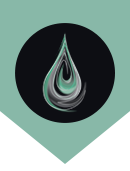
Do you undertake stability testing of your cosmetics?
If you stability test your cosmetics, you will no longer need to hope that your products remain stable. Instead you will become confident that your products will last for their specified shelf life.
Once you incorporate stability testing into the ethos of your business, you demonstrate that you are a professional cosmetic formulator who aims to ensure that their products, and consequently their reputation, remains intact.
Why is stability testing important?
As a formulator or product manufacturer you want to avoid the nightmare of precipitated pigments in a clear solution, suspended particles swimming on top of or settled at the bottom of the bottle, an emulsion separated in 2 or 3 phases, orange-brown spots on a soap bar or a shower gel with a water-like viscosity.
Even if you are not directly violate any health-related legislations, you definitely want to avoid customer complaints, product rejections and requests for refunds because your product has changed in appearance or functionality during its storage period and before the expiry of its shelf life.
The actual problem is, that the stability testing is not mandatory for cosmetics (in contrast to pharmaceuticals for instance) and because of this, there are no standards and no legal guidelines and instructions for stability testing.
Although not mandatory, it is a necessity for any cosmetic manufacturer, no matter whether you prepare bespoke 50 gram samples per order or 5000 tonnes of a certain product per batch to guarantee the visual, functional, toxicological and olfactory stability of the product.
Purposes Of Stability Testing
By running suitable stability tests you’re covering multiple bases at once. You will:
- Predict the behavior of the cosmetic product under different conditions (temperature, humidity, exposure).
- Predict the behavior of the cosmetic product during shipment and make sure your product would withstand all thermal and mechanical shocks it is exposed to during storage and transfer (and even by the customer).
- Predict the shelf-life of the cosmetic product.
- Determine the most suitable container for your cosmetic product.
- Determine the required instruction for customer regarding storage and application.
Outsource your stability testing requirements
Stability testing can be overwhelming for the artisan cosmetic manufacturer, particularly if you don’t know where to begin and how to proceed. Nonetheless, stability testing is something you will have to deal with from the very beginning of your cosmetic formulation career.
Keep in mind that even the most effective, luxurious and pampering lotion is useless if it separates into two phases, or changes its scent or colour before the shelf-life is expired.
Particularly in the case of natural and organic skincare and cosmetics, where you apply sensitive plant oils, plant extracts, hydrosols, honey, natural clays and gums, the product is much more susceptible to thermal, mechanical and microbiological changes, compared to mainstream products based on water or mineral oil.
Let Green Alchemy help you
Stability tests are as diversified as the cosmetic products. Since there are no standards, each manufacturer has to develop their own stability protocols by experience. The tests in general and the test conditions in particular depend on the cosmetic product itself, its manufacturing and packaging and the conditions of the market where the product is to be sold.
To save you from confusion and unnecessary tests and costs we can offer you:
- Running stability tests for you during your product development phase to show you which tests would be more important and relevant for an individual product.
- Step-by-step design of a suitable stability test protocol for an individual product.
- Determining which tests would be relevant and significant for each individual product.
- Providing you with a program of the tests you can run in your own facility and the tests you can or shall outsource.
- Helping you establishing your stability test laboratory based on your individual products and requirements.
Talk to us about your project
Want more information? We are happy to talk to you about your project. Send us a message using the form below and we’ll get back to you as soon as possible.
